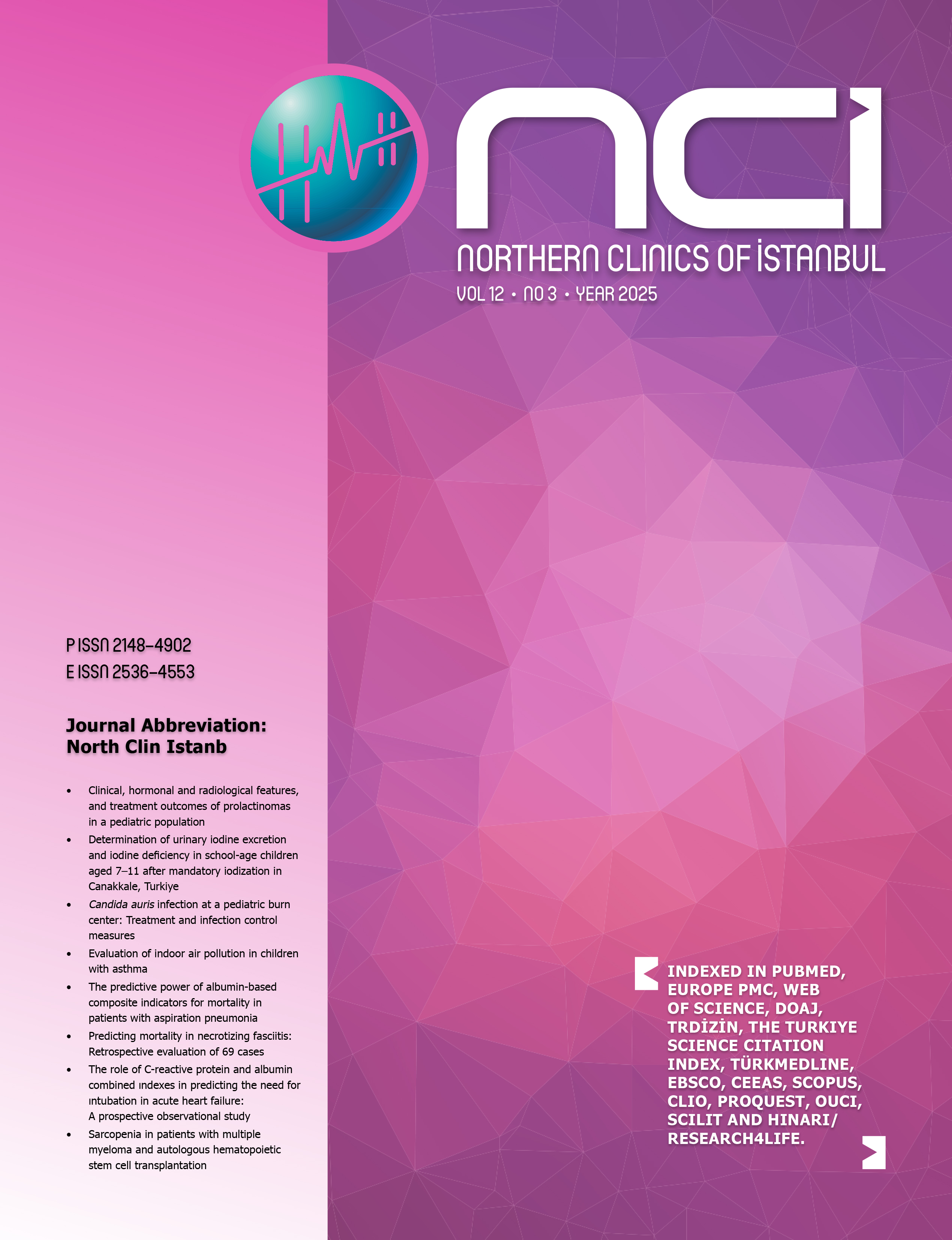Analysis of late-onset neonatal sepsis cases in a level three neonatal intensive care unit
Ali Gul1, Sahin Takci21Department of Pediatrics, Gaziosmanpasa University Faculty of Medicine, Tokat, Turkey2Division of Neonatology, Department of Pediatrics, Gaziosmanpasa University Faculty of Medicine, Tokat, Turkey
OBJECTIVE: Newborns in neonatal intensive care units (NICUs) are at high risk for developing nosocomial infections (NIs), which may result in morbidity and mortality. In this study, we aimed to ascertain the bacteriological profiles and their antimicrobial susceptibility patterns in NIs.
METHODS: We conducted a cross-sectional study in the NICU. Late-onset sepsis (LOS) cases confirmed with blood cultures were evaluated retrospectively. Laboratory parameters, demographics, and clinical data were collected and analyzed from hospital records retrospectively.
RESULTS: Of the 1210 infants in the NICU, 76 (6.3%) had LOS. A total of 86 episodes of LOS were documented; in 10 infants, two pathogens were identified. The mean gestational age (GA) of the infants with LOS was 33.2±4.8 weeks (23 to 42 weeks). Gram-positive cocci (GPC) caused most of the LOS episodes (65.8%, 50/76), with coagulase-negative Staphylococcus (CoNS) as the most common cause of LOS (50%, 38/76). Gram-negative rod species (GNRs) accounted for 32.9% (25/76) of the LOS cases, and fungi accounted for 1.3% (1/76). The mortality rates for GNR and GPC were 17.9% and 6.4%, respectively (p>0.05). The mean CRP and conjugated bilirubin levels for the GPC and GNR groups were 37.5 vs. 29.5 mg/dl and 0.7 vs 1.5 mg/dl, respectively (p>0.05). GNRs had a 2025% ceftriaxone resistance. Two (4%) GPC species were resistant to linezolid, while all were susceptible to vancomycin. All of the GNRs were susceptible to carbapenems.
CONCLUSION: These results underscore the recent emergence of CoNS in NICUs. LOS due to GNRs seems to display higher C-reactive protein and conjugated bilirubin values than those due to GPC. Clinical monitoring of NIs and bacterial resistance profiles are required in all NICUs.
Üçüncü Seviye Yenidoğan Yoğun Bakım Ünitesinde Geç Başlangıçlı Yenidoğan Sepsis Olgularının Değerlendirilmesi
Ali Gul1, Sahin Takci21Department of Pediatrics, Gaziosmanpasa University Faculty of Medicine, Tokat, Turkey2Division of Neonatology, Department of Pediatrics, Gaziosmanpasa University Faculty of Medicine, Tokat, Turkey
GİRİŞ ve AMAÇ: Yenidoğan yoğun bakım ünitelerinde (YYBÜlerinde) yenidoğanlar, morbidite ve mortalite oranı yüksek olan nozokomiyal enfeksiyonların (NEın) gelişmesi için yüksek risk altındadırlar. Bu çalışmada, NEın bakteriyolojik profillerini ve antimikrobiyal duyarlılık durumlarını saptamayı amaçladık.
YÖNTEM ve GEREÇLER: YYBÜsinde kesitsel bir çalışma yürüttük. Kan kültürleri ile teyit edilen geç başlangıçlı yenidoğan sepsisi (GBYSi) olguları retrospektif olarak değerlendirildi. Laboratuvar parametreleri, demografik özellikler ve klinik veriler hastane kayıtlarından retrospektif olarak toplanarak analiz edildi.
BULGULAR: YYBÜsinde 1210 bebeğin 76'sında (% 6.3) GBYSi vardı. Toplam 86 GBYS atağı belgelendi; 10 bebekte 2 patojen tespit edildi. GBYSli bebeklerin ortalama gebelik haftası 33.2 ± 4.8 hafta (23-42 hafta) idi. GBYS ataklarının çoğunda Gram-pozitif koklar (GPC) (% 65,8, 50/76), mikroorganizma olarak da en yaygın neden koagülaz-negatif Staphylococcus (CoNS) (% 50, 38/76) saptandı. Gram-negatif basil (GNR) türleri GBYS vakalarının %32,9 (25/76) oluşturdu ve mantarların oranı % 1,3tü (1/76). GNR ve GPC için mortalite oranları sırasıyla % 17,9 ve % 6,4 idi (p> 0.05). GPC ve GNR grupları için ortalama CRP ve konjuge bilirubin seviyeleri sırasıyla 37,5e 29,5 mg / dl ve 0,7ye göre 1.5 mg / dl idi (iki karşılaştırma için p> 0.05;). GNRlerde % 20-25'lik bir seftriakson direnci vardı. İki (% 4) GPC suşu, linezolide dirençli iken, hepsi vankomisine karşı duyarlıydı. Tüm GNRler karbapenemlere duyarlıydı.
TARTIŞMA ve SONUÇ: Bu sonuçlar, YYBÜlerde CoNSun yeni ortaya çıkışının altını çizmektedir. GNRlere bağlı GBYSler, GPCa bağlı olanlardan daha yüksek C-reaktif protein ve konjuge bilirubin değerleri sergilemektedir. Tüm YYBÜlerde NEın ve bakteriyel direnç profillerinin izlenmesi önerilmektedir. (NCI-2018-0219.R1)
Manuscript Language: English





















